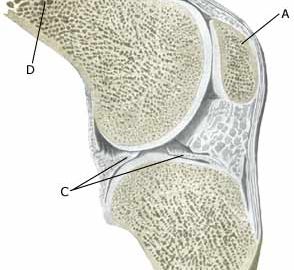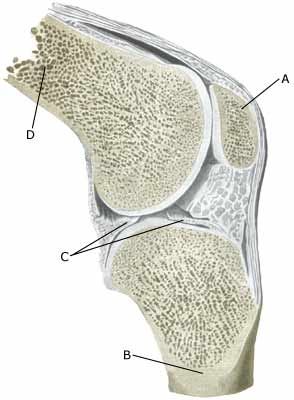DEGERATIVE ARTHRITIS
|
||
|
||
| Cause: Repeated and uniform loads can cause damage to the cartilage, and subsequently the bone beneath the cartilage (degenerative arthritis). of the synovial membrane (synovitis), which will cause formation of fluid, swelling, reduction in mobility and pain in the knee joint. Degenerative arthritis in the knee joint is often seen after a previous rupture of the anterior cruciate ligament, rupture of the posterior cruciate ligament eller meniscus lesion, where it has been necessary to remove the whole or part of the meniscus.
Symptoms: Pain in the joint with movement under load or strain. Difficulties in the start up phase are often experienced, alleviated after warm-up, but with pain again after a prolonged period under load. Swelling of the joint (synovitis) in occasional cases. With pronounced swelling, a fluid filled bursa can develop in the hollow (popliteal space) of the knee (Baker cyst). Examination: Normal medical examination is usually sufficient to make the diagnosis, however, it is also often necessary to perform an x-ray (or ultrasound scan or MR scan) to make the diagnosis. Treatment: Treatment comprises relief from the pain inducing activities until the swelling has gone down, after which training can commence with the primary aim to strengthen the muscles surrounding the joint and retain joint mobility (article). There is no treatment which can restore the damaged cartilage (and bone). Cartilage transplants are, as yet, not suitable for general degenerative arthritis. In cases of swelling in the joint (and popliteal space), inflammation of the synovial membrane (synovitis) can be attempted subdued by using rheumatic medicine (NSAID), or by draining the fluid and injecting corticosteroid. The injections can be performed to advantage by utilising an ultrasound guided method (Ultrasonic image). Pain without swelling of the joints is best treated with paracetamol. In severe cases of degenerative arthritis where there is pain when resting (at night), it may be necessary to replace the joint. Rehabilitation: Rehabilitation is primarily aimed at strengthening the thigh muscles, whereby the joint can be stabilised and relieved to a certain extent. Complications: Degenerative arthritis which is positioned on the weight-bearing parts of the joint surfaces represents one of the most serious sports injuries, and often results in an end to the sporting career. It is usually possible to participate in sports with lesser knee straining activity (i.e. swimming), whereas sports with great knee straining activity (i.e. running, football) should be treated with reservation. Special: Shock absorbing shoes or inlays will reduce the load on the knee. |


